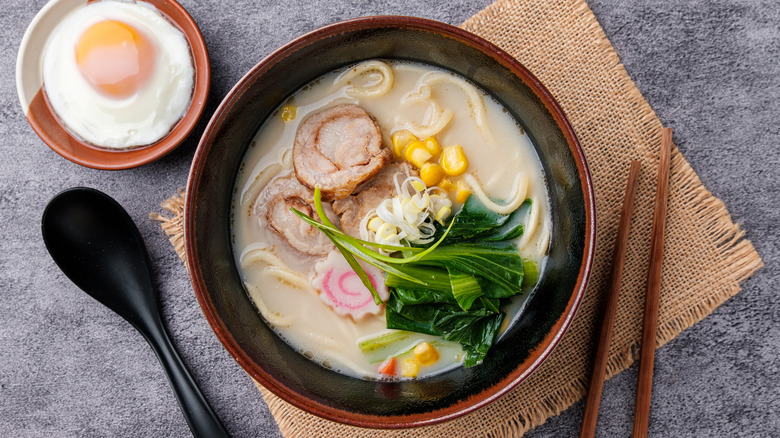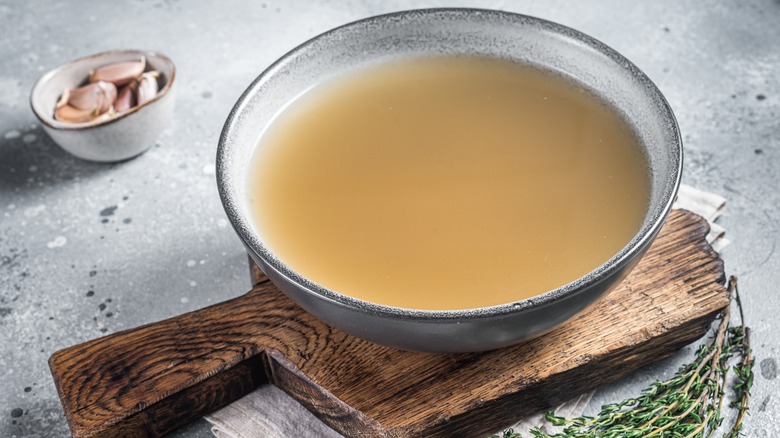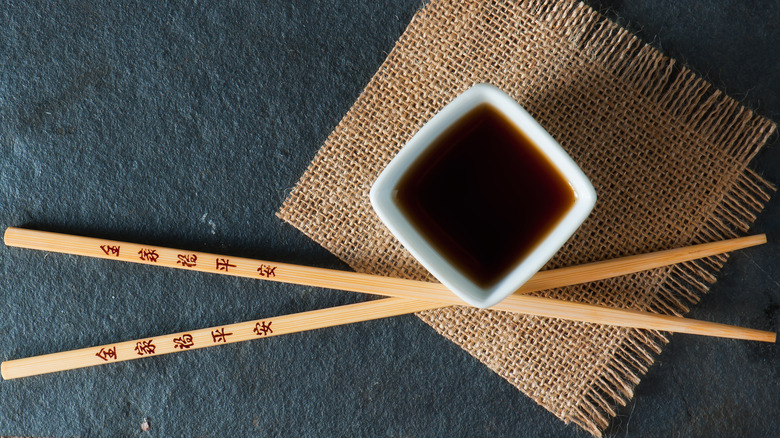Chef Markee Manaloto's Top Tips For Making The Perfect Ramen Broth At Home
Anything done well cannot be told from magic, and a really well-put-together bowl of ramen can only be described as magical. It is exquisitely delicious, uniquely satisfying, savory yet vaguely sweet, and features all manner of goodies like tonkatsu pork and those fabulous noodles. The basis of every good ramen, of course, is the broth — and if all you've ever had is the cheap-but-filling packaged variety (hopefully adding any of the ingredients that seriously upgrade instant ramen), come over to the home-cooked side. Daily Meal spoke with chef Markee Manaloto, a partner and executive chef at Mishik in New York City, about how you can make the perfect ramen broth.
In this exclusive Daily Meal interview, chef Manaloto revealed the secrets of a flavorfully complex yet uncomplicated ramen broth: "I'm sure a lot of people have had instant ramen at home, but why not try making the real stuff? The key is the broth."
Okay, let's begin there — it's always good to start at the beginning. You'll need clean water, a big pot, and some animal bones. (The two most popular types of ramen, shoyu and tonkotsu, begin with either a chicken or pork broth.)
Ramen broth 101
"The trick is to first boil the bones you're using — chicken, beef, pork, seafood, whatever — for about 5-10 minutes," Chef Markee Manaloto told Daily Meal. Then strain out the bones and clean them along with the pot, removing all the impurities," leaving you with a clean broth.
(Those impurities are stray meat proteins which coagulate when heated, usually referred to as scum.) Choose the amount of bones according to how much ramen you want to make. Start with one pound of bones for every quart of water. Place the bones in cold water, bring it to the boil slowly, and skim off the scum with a fine-mesh strainer. Afterward, strain the water, rinse the boiled bones, and clean the pot. Now, you're ready to make your ramen broth.
Apart from the boiled bones and accompanying water, you will want to add the appropriate kind of aromatic vegetables: Think ginger, garlic, scallions, and shallots. You can choose to sauté them in a bit of sesame oil first or just put everything in the pot, as Chef Manaloto recommends. "The next trick is to cook [the broth] for a long, long time at high heat," he said. "This pulls out all the fat, collagen and other goodness from the bones and emulsifies it into the broth, creating a super-rich and creamy end product that you usually only find in restaurants." (By the way, there's a real upside to having bone broth in your life.)
The finishing touches
Chef Markee Manaloto's next recommendation for the perfect bowl of homemade ramen is inspired: A side of simple, multipurpose Japanese sauce used for everything from grilled meat to ramen. "Serve it with some tare — a sauce of soy sauce, sake, mirin, sugar and broth that's cooked down until your desired thickness — and some nice store-bought ramen noodles," Chef Manaloto told Daily Meal. "You won't have a bad time."
Ramen is a specific type of Japanese noodle made from wheat flour, salt, and kansui, an alkaline water that makes them springier and able to be cut thinner. Of course, you can put any noodle you like into your bowl of ramen!
What else you can add to your ramen bowl is up to you, and the options are all wonderful: Consider some baby bok choy or a halved soft-boiled egg. A healthy spoonful of miso paste wouldn't be out of order — neither would bean sprouts, toasted sesame seeds, sliced shiitake mushrooms, or shredded nori (a dried seaweed). A large spoon, a pair of chopsticks, and the world is yours. Once fortified, you can tackle how to make your sushi stand out.


